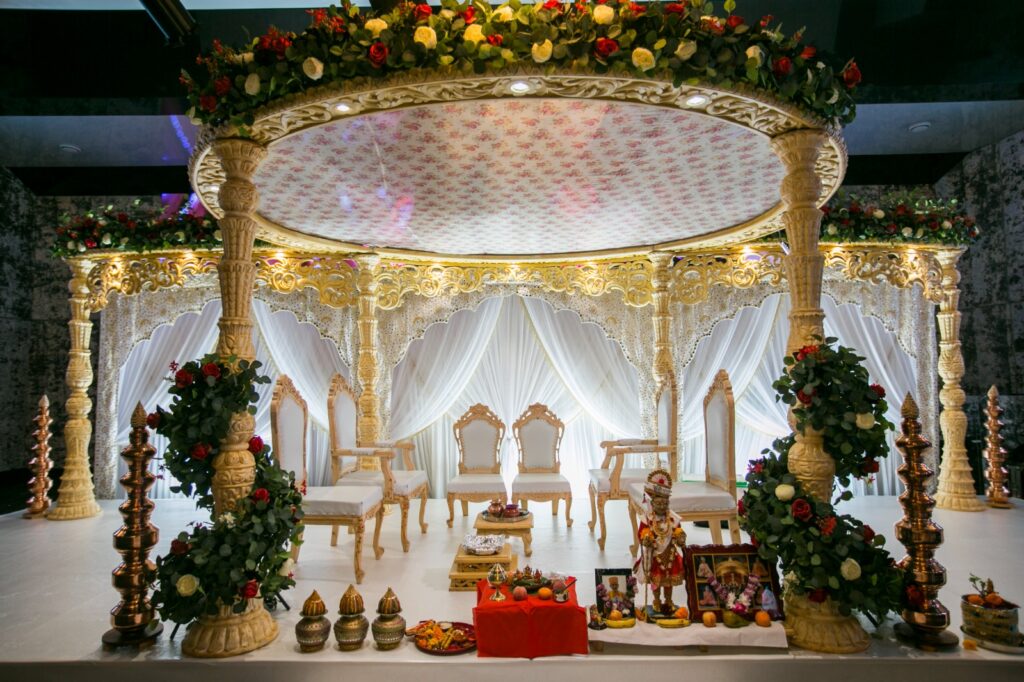Monday, October 10th, 2016
Indian Wedding Traditions You Didn’t Know About
We’ve seen it in the movies—bouquet tossing, the white dress, the bridesmaids—wedding traditions are a big part of most cultures. In some cultures, the history of wedding traditions are forgotten but the customs remain prevalent, while in others, the root is as important as the tradition. There are so many cool wedding customs found around the world and each has it’s own distnict attributes. Indian weddings are known for their notable and unique characteristics from the colorful attire to Mehendi (also known as henna). The following are some of the traditional wedding customs that make Indian weddings so special.
Misri
Indian weddings traditionally last three days—all ceremonies considered. The first of these ceremonies is Misri, which takes place several days before the actual wedding day. In this ceremony, the marrying couple exchanges prayers, flower garlands and gold rings. Traditionally, the groom’s parents present the bride with a basket of gifts and misri (rock sugar), representative of sweetness in the future.
Sangeet Party
The Sangeet party can be held separately or combined with the Mehendi ceremony. The celebration consists of the families of the bride and groom (or just the women) getting together for song and dance.
Mehendi
The Mehendi ceremony takes place just one day before the actual wedding. Only women attend this event in which intricate patters are drawn on their hands and feet with mehendi (also known as henna). The designs signify a deep bond between the husband and wife. Often times, the Mehendi ceremony is combined with Sagri, in which the groom’s female family members bring gifts and flowers to the bride.
Haldi Ceremony
On the morning of the wedding, the Haldi ceremony is held. In this tradition, both sides of the family spread a mixture of oil, water and turmeric over the skin and clothes of the bride and groom. The mixture is believed to play a role in blessing the couple and in moisturizing and calming their skin before the wedding.
Mandap

In traditional Indian weddings, the ceremony takes place under a Mandap, which is a four-pillared canopy. It is customary for the Mandap to be decorated with bright colors.
Laja Homa
During the wedding ceremony, the brother of the bride pours rice into her hands, some of which slips into the groom’s hands cupped below hers, and then into the sacred fire (which is lit in traditional ceremonies and is referred to as Agni).
Mangalsultra
In the Hindu tradition, rather than exchanging wedding rings, the groom ties a mangalsultra around the bride’s neck. The Mangalsultra is a necklace with two gold pendants. The groom ties the necklace with three knots to signify a strong bonding for 100 years.
Colors
One of the most significant parts of Indian weddings is the vibrant colors found throughout the celebration. From the attire to the flowers and decoration, colors such as red, gold, orange and burgundy generally fill the room.
Attire
Traditionally, the bride will wear a 16-piece attire called Solah Shringar which includes make up, jewelry, and clothes. Each item is meant to bring out the natural beauty of the bride. One notable piece of the Solah Shringar is the Mangtikka, which is the giant jewel the bride wears on her forehead and through the part of her hair. The actual garment the bride wears will vary depending on what region she is from. The type of jewelry may also vary. The groom’s attire is not as elaborate… at a traditional Hindu wedding, the groom will wear a Sherwani and Mojari, which is a type of shoe that is seen often in Mughal art. As for the guests, most women at the wedding will be wearing a Sari or a Lengha. The guests, as well as the bride and groom, generally dress in loud color. Most attendees will wear Bindis and Bangles as part of their custom wedding attire as well. Some women also wear payals (anklets).
Every culture contributes it’s own characteristics to wedding traditions. Learning about different wedding customs from around the world is a great way to understand the lifestyles and special traditions of other cultures and even to better understand your own. Indian weddings have many unique customs so especially if you plan on attending one or throwing your own, it’s a great idea to gain a good understanding of what to expect.





